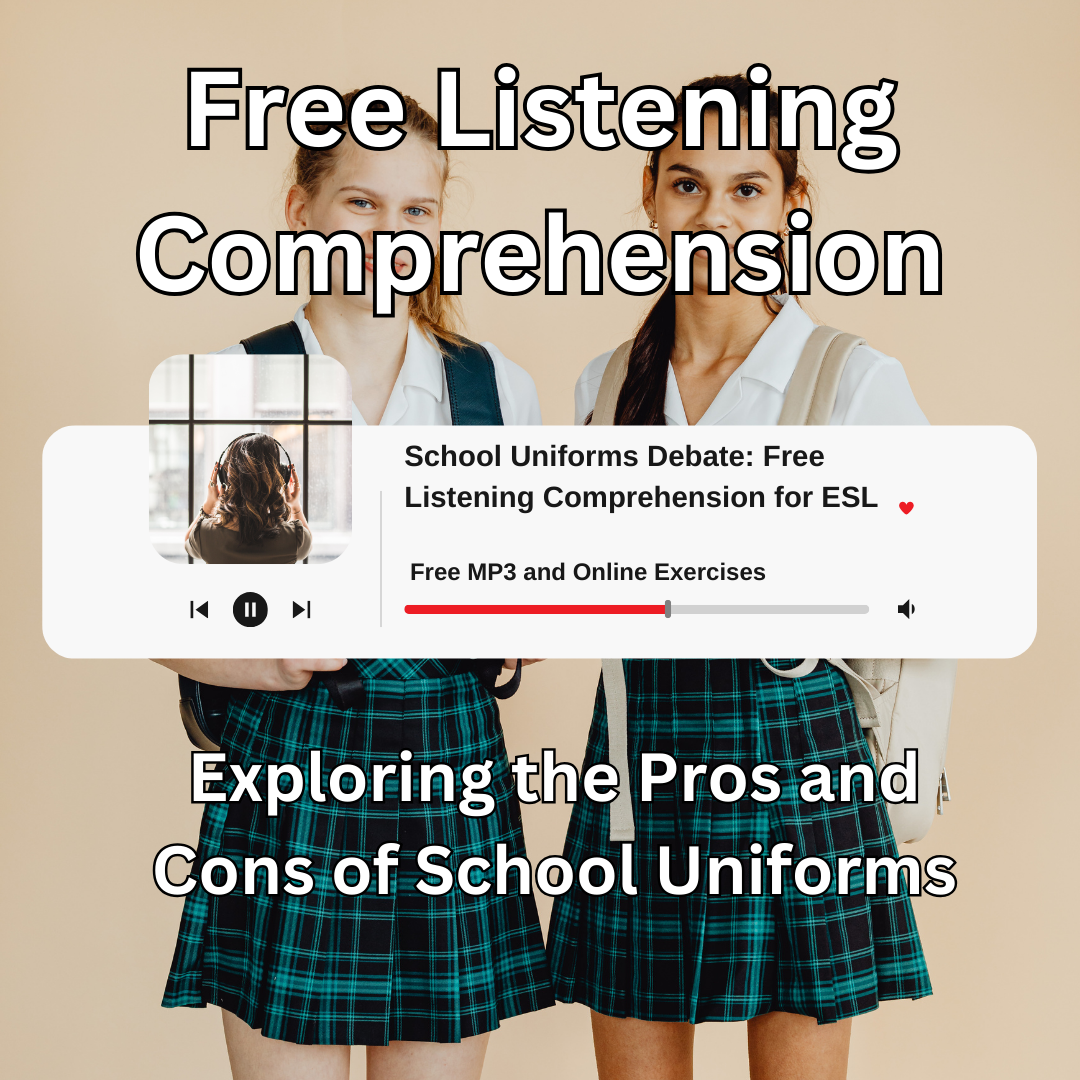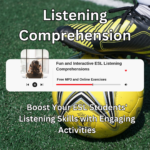School Uniforms Debate: Free Listening Comprehension for ESL. Exploring the Pros and Cons of School Uniforms
School Uniforms Debate: Free Listening Comprehension for ESL

School Uniforms Debate: Free Listening Comprehension for ESL
Learning a new language becomes more enjoyable and effective when you integrate various listening comprehension exercises. Here are three captivating listening exercises for ESL learners, featuring multiple-choice questions, fill-in-the-gap tasks, and drag-the-words activities. These exercises are designed to enhance students’ listening skills, comprehension, and vocabulary.
Are you an ESL learner aiming to sharpen your English listening skills? This exercise is tailored just for you! Dive into a real conversation where two people debate the pros and cons of school uniforms. After listening to the transcript, test your understanding with a multiple-choice quiz, a fill-in-the-gap activity, and a drag-the-word exercise.
Listening Comprehension Activities
Instructions:
- Play the audio clip for the students.
- Have students listen carefully to the clip.
- After listening, provide the students with the transcripts
Listen to the MP3 audio file and complete the following exercises


Check your answers with the transcript provided
Transcripts
Marian, at the school you work at, do the children wear uniforms?
Yes, they do.
That’s terrible.
Do you think so?
Yeah. I think it’s a good thing that they wear uniforms for them and for their parents, too.
Why?
Well, because when they wake up in the morning, they don’t have to think about what they wear for that day. So it saves time. They can have extra time in bed, maybe. And for their parents, it saves them a lot of money, I think.
See, I, I disagree. First of all, when children are young, they’re starting to be creative for the first time. So just by choosing what they’re going to wear every day, they can show their creativity or their individuality. You know, also it it helps students learn to make choices, to make decisions, to make decisions for themselves.
I don’t know, like a uniform, you take that away from children. I think they can, they can learn how to choose in other ways, maybe I don’t know the accessories they wear, but basically that everybody is in the same clothes. I think it’s really good just to make everybody equal.
Did you wear a uniform when you were at school?
No, I didn’t. No I didn’t. And, and looking back, I am glad I didn’t because, you know, your clothes reflect your personality. And I think that it’s important for kids to be able to show how they are as a person through their clothes.
But maybe if you can show your personality through your personality and you don’t need your clothes to show your personality, then then that’s a bit better.
I think that’s a good point. I guess I just can’t imagine wearing a uniform every day. Plus, I mean, if you wear a uniform every day, it must get really old, really repetitive, the same thing again and again and again. And I think that mentally can be tiring.
I think though, it might be tiring or worrying mentally if you, for example, if you see other children in your school who have nicer clothes, more expensive clothes, and your parents can’t afford those kind of clothes, then it makes you feel left out when you’re a child. And that’s really, really awful if you feel that way as a child just because of clothes and money, I think.
Well, did you wear a uniform?
Yes, I went. Do you feel that way?
I went to school in Ireland, so almost all schools have uniforms. So for us, it felt very normal that when I was in primary school, we had a uniform and then in secondary school a different uniform.
And my brother’s school had a uniform. So it’s normal for us. So I thought it was OK. Sometimes you do get bored, but I think overall it saved us time in the morning, which was good.

Now that you’ve completed these exercises, you’re well on your way to improving your listening comprehension skills. Keep practicing, and you’ll continue to see progress!

DOWNLOAD THE PDF FOR FREE

Also check out these listening exercises












